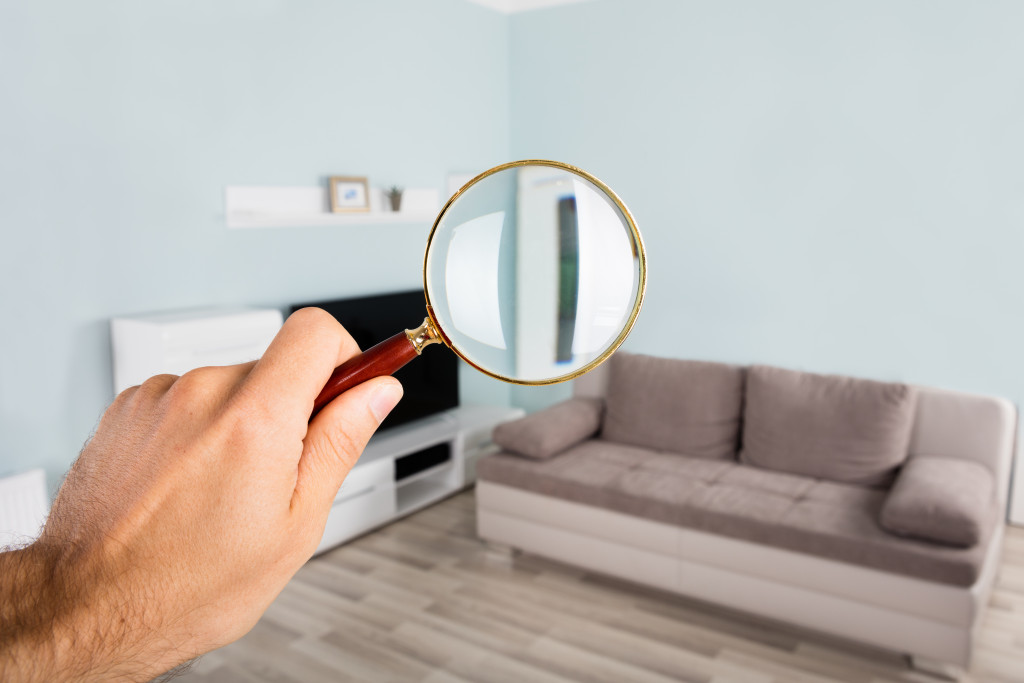- It’s crucial to inspect the property before signing on the dotted line to identify any potential hazards that may exist.
- The exterior walls, foundation, and roof should be examined for cracks and holes.
- Plumbing and electrical systems should be checked for leaks and blockages.
- Interior walls should be inspected for any signs of wear or tear.
Moving into a new home can be an exciting yet overwhelming experience. This is a moment in your life when you feel like you are given a chance to start over and create new memories in a brand-new place.
However, it’s crucial to note that your comfort and well-being depend on the quality of your new home. That’s why it is so important to inspect every corner with utmost care and attention before signing a lease or purchase agreement.
The Importance of Inspection
Moving into a new home can be an exciting experience. Still, it’s essential to make sure that you take the time to inspect the property before signing on the dotted line. Inspection is necessary for many reasons, and it can save you from many headaches.
Identifying Potential Hazards
The most obvious reason why inspecting a home before moving in is essential is that it allows you to identify any potential hazards in the space. An inspector will be able to spot any problems with the home’s structure and any issues with wiring, plumbing, or other components.
For example, suppose the wiring in your house is outdated. In that case, this could potentially lead to a fire hazard and should be addressed immediately. Having an inspection before moving in will allow you to identify these issues and address them immediately.
Checking for Pests and Mold

Another important reason you should have a home inspection before moving in is that it allows you to check for pests and mold. Many homeowners don’t realize that their homes could have pests such as termites or cockroaches hidden beneath the surface until they move in.
A thorough inspection can help detect these types of pests before they become an issue, saving you from having to deal with expensive extermination services later. Additionally, inspectors will also be able to detect mold, which can cause respiratory problems if left untreated.
Areas to Inspect
Now that you know why it’s crucial to have an inspection done before moving into a new home, let’s take a look at four areas you should examine closely:
Exterior/Structural Inspections
The first thing you should look at when inspecting your new home is the exterior walls, foundation, and roof. These are all major structural components that will tell you if the house has any problems or potentially dangerous issues that need to be addressed. Make sure to note any cracks, holes, or other signs of damage and have them fixed before moving in.
Plumbing and Electrical Systems
Next, you should inspect the plumbing and electrical systems in the home. Make sure there are no leaks or blockages in the pipes and that all outlets are functioning properly. Check that all switches turn on and off correctly, as well as all light fixtures are free from any defects or damage.
If something doesn’t look right, it could indicate an underlying plumbing or electrical problem and should be investigated further. Contact plumbing services to ensure the plumbing is up-to-date and functioning correctly. They can also help you detect any problems that need to be addressed.
Interior Walls
Once you’ve checked out the exterior of the house, it’s time to move inside and inspect the interior walls for any signs of wear or tear that could affect your living conditions once you move in. Look for any cracked paint or peeling wallpaper that needs attention before settling in permanently; this could indicate moisture damage caused by leaks or poor ventilation, which needs to be addressed quickly, so it doesn’t become a bigger problem down the line.
HVAC System

The heating and cooling system of your new house is another area worth looking at closely; check for worn parts and make sure everything is running smoothly so you don’t have to deal with costly repairs down the line! If necessary, replace filters or clean ducts so they are free from dirt or debris that could cause circulation problems throughout your home once occupied permanently by yourself or your family members.
Final Thoughts
Moving into a new home is an exciting yet overwhelming experience, but making sure everything is up to par before settling in permanently can ensure a smooth transition process with minimal stress involved! Take some time to thoroughly inspect each area mentioned above for peace of mind knowing your house will provide comfort during its tenure as yours!

